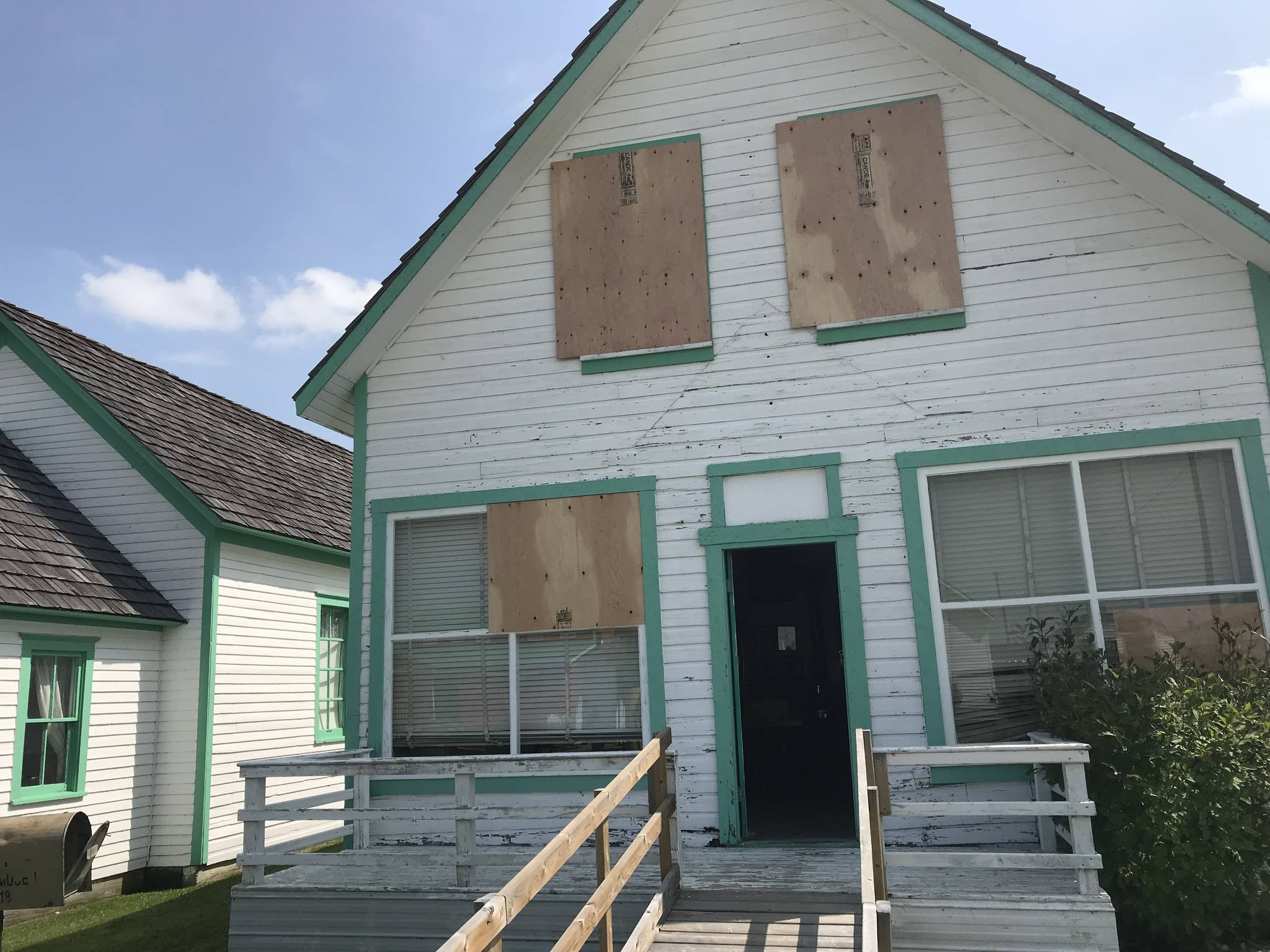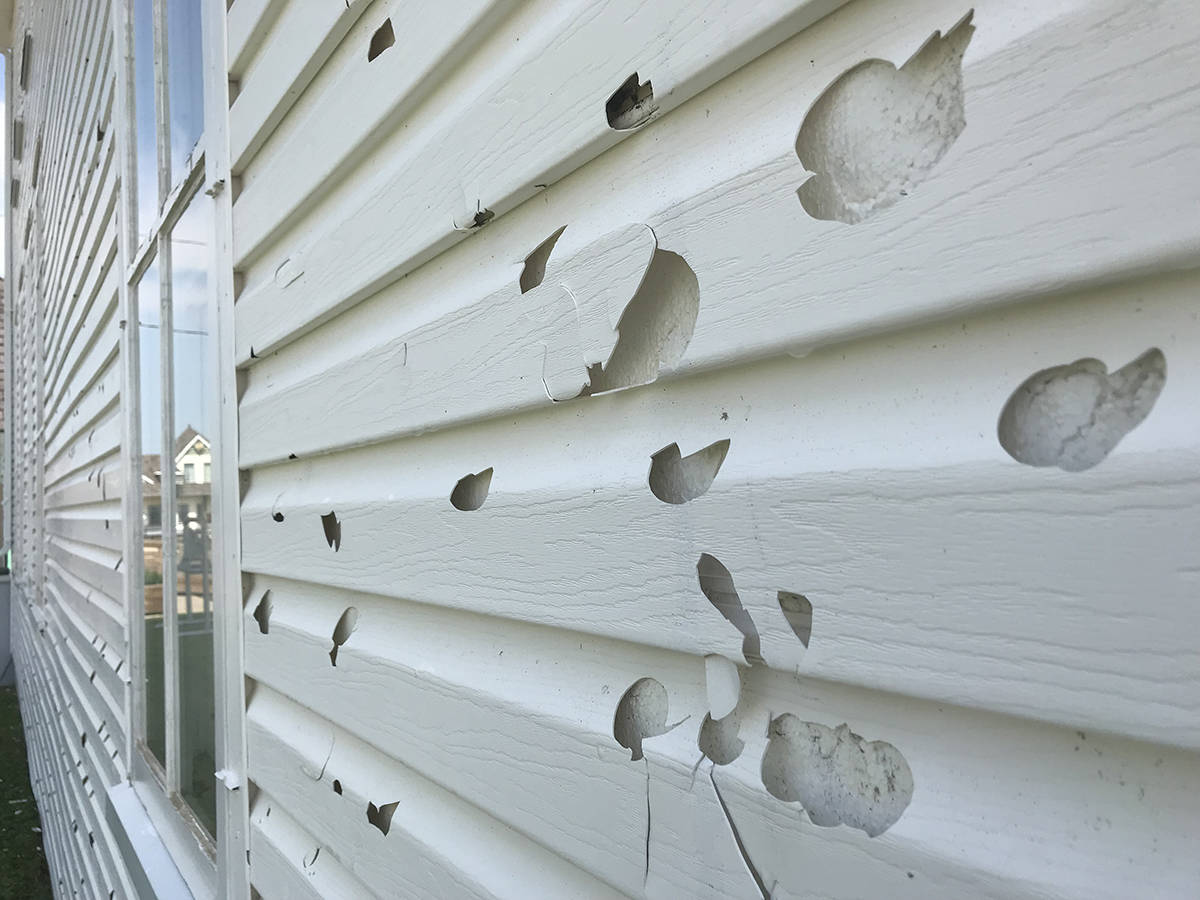The hail storm that pulverized Stettler on July 30th, although very destructive, wasn’t an extremely rare occurrence in Central Alberta.
Dan Kulak, a meterologist with Environment Canada, said reports of golf-ball sized hail aren’t that unusual for the region during hotter summer days.
In the Erskine area, nickel-sized hail was reported as well.
Kulak also explained that with large hail and such unstable weather often comes significant wind.
“In order to produce golf ball sized hail, there has to be some pretty strong updrafts,” he said. “You have these at first small hailstones suspended in the air, and the longer they stay there, the more water they collect on their surfaces.”
Layers of moisture keep increasing the size of these stones before they start plummeting to the ground.
The instability only tends to escalate as the warm air shoots up and the cold air sinks.
“You are also looking at very strong, vertical updrafts to keep these things going,” he said. “And then when they eventually do fall out of the updraft, they are falling from (several) kilometres up - so they are basically falling at terminal velocity when they hit the ground,” he explained.
Thankfully, hailstorms tend to be relatively brief.
“The storms that produce these types of things tend to be moving along. They aren’t standing still producing this size of hail,” he said.
As to what many have perceived as an unusually wet July, Kulak said it doesn’t come close to the record for July moisture recorded in past years.
“One thing that I think has been skewing the perception of the wetness is the number of days that we have had precipitation in the month of July. For example, if rain fall 15 days out of 30, it appears to be a very, very wet month.”
But the actual amount of rain that has fallen might not be record-breaking at all.
“You start to get this impression that it’s a record-breaking month,” he said. “It’s a perception.”
Temperatures from last month, however, tell a rather different story.
In looking at Central Alberta numbers for July, Kulak said the average temperature was 14.8C - that’s taking daytime highs and overnight lows into account.
“It makes it the ninth coldest month out of 106 years,” he said. “So it definitely was on the cool side of normal,” he said, adding that the normal average daytime and nighttime temperature for the month of July is 15.9C.
As to August, Kulak said essentially we can only hope for the best considering the changeability of Alberta weather but initial reports are pointing to a cooler than normal month.
Meanwhile, local residents continue to assess the damages to homes and structures around town.
Karen Wahlund, manager of the Stettler Town & Country Museum, said that about 30 windows were broken around the site. “Most of them are on historic buildings.”
The siding on the old court house was severely damaged as well. “One of our school houses has seven windows smashed out on the north side. And then the building next to it has the south-side window smashed out, too.”
Wahlund was also grateful for her loyal volunteers who took the time to come out and help board up the damaged buildings.

